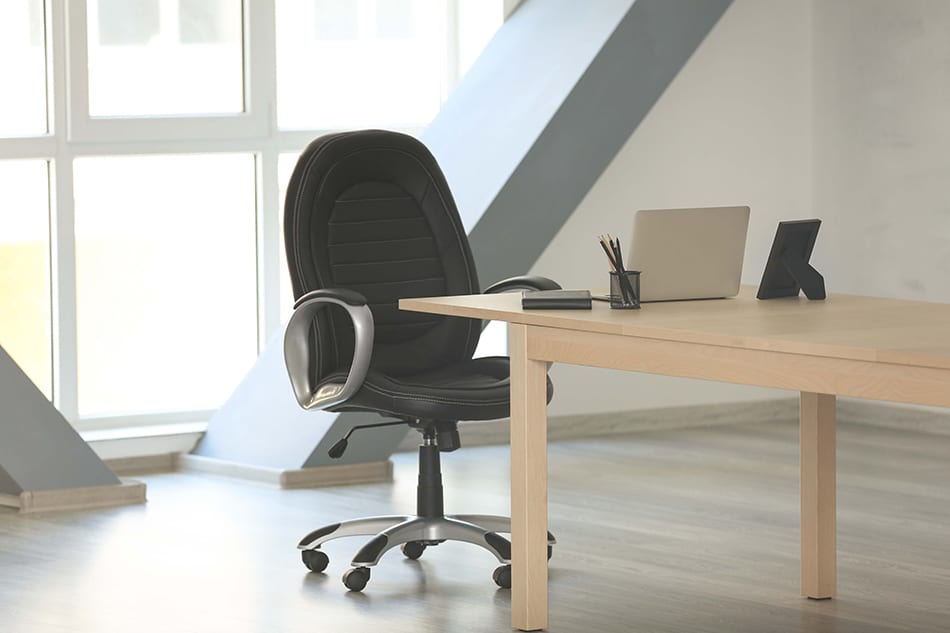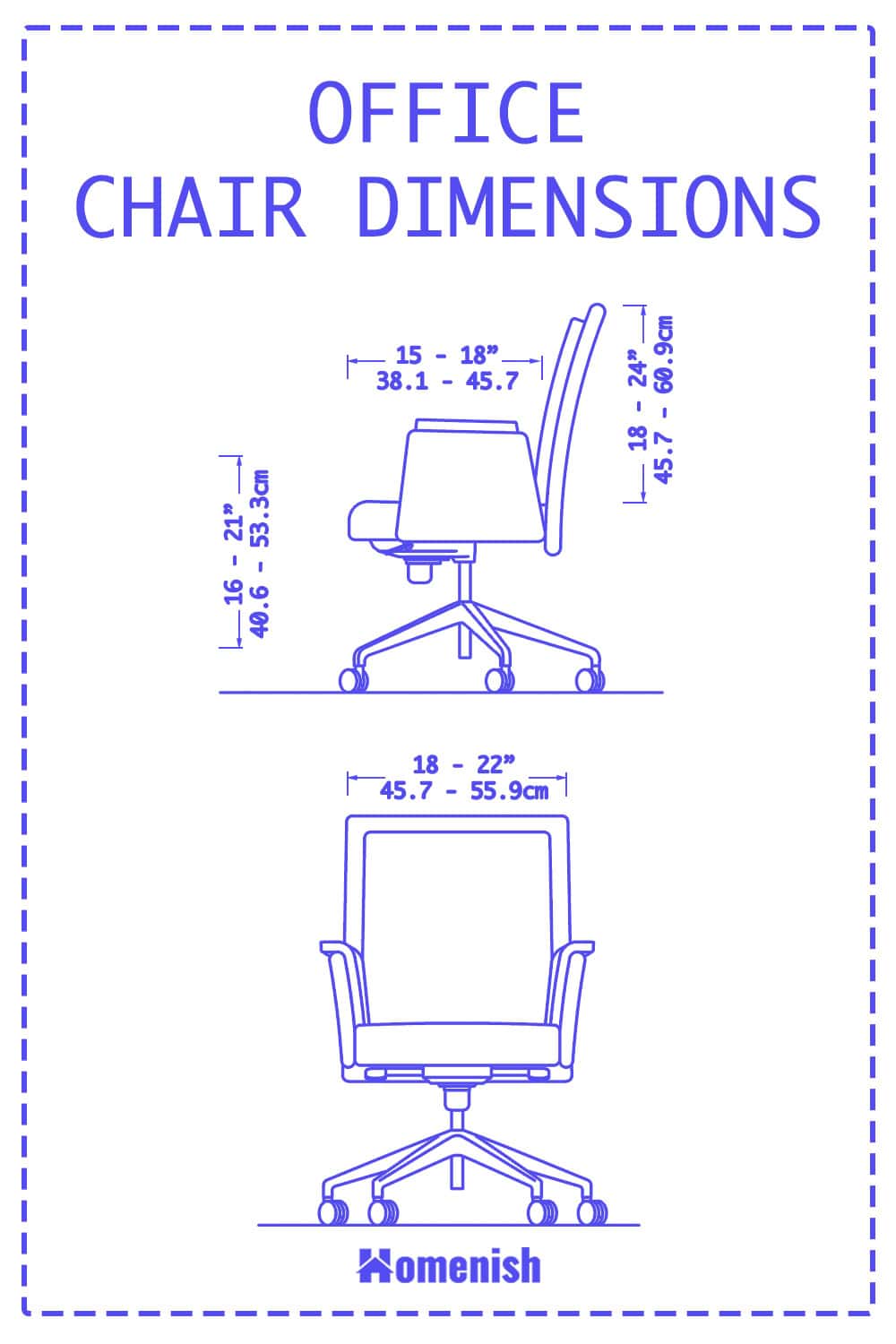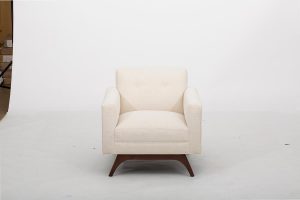You sit at your desk and adjust your chair but something never feels quite right. The problem often comes down to office chair dimensions. Getting the right size can make a big difference in your daily comfort.
Standard office chair dimensions include a seat height of about 18 to 22 inches from the floor, a seat width of 19 to 21 inches, and a depth of 18 to 20 inches. These measurements fit most people, but your individual needs may vary depending on your height and how you like to sit.
If your chair’s dimensions don’t match your body, you might notice sore legs, poor posture, or ongoing discomfort. Choosing a chair with the right measurements for your frame helps you work more comfortably and stay healthy.
Office Chair Dimensions
You need the right office chair dimensions for proper support and comfort. Office chair sizes affect posture, leg position, and how well you can work.
Seat Height
The seat height of an office chair must let you rest your feet flat on the floor. Most chairs have a range from about 16 to 21 inches from the floor to the top of the seat. This range fits most adults.
Adjust the seat so that your knees form a 90-degree angle and your thighs remain parallel with the floor. If your chair height is too low, your knees may rise above your hips and cause discomfort. When it’s too high, your feet won’t reach the floor, which can cut off circulation.
Seat Width And Depth
Seat width and depth decide how much room you have to sit. Standard seat width usually falls between 17 and 20 inches. This lets most users sit comfortably without feeling squeezed.
Seat depth means the distance from the front of the seat to the backrest. Most office chairs have a depth between 16.5 and 18.5 inches. A good seat depth lets you sit with your back against the chair while keeping about 2 to 4 inches between the back of your knees and the seat’s edge.
Backrest Height And Width
Backrest height supports your spine and shoulders. Many chairs offer a backrest height between 18 and 24 inches. Shorter heights provide only lower back support, while taller backs support shoulders and head.
The width of the backrest usually ranges from 12 to 20 inches. Broad backrests can feel more supportive but shouldn’t restrict your arm movement.
Armrest Height And Width
Armrest height must allow your arms to relax at a natural angle. Good office chair armrests adjust from about 7 to 11 inches above the seat, letting your shoulders remain low and your elbows bent at about 90 degrees.
Armrest width varies between 2 and 4 inches. This offers support for your forearms without spreading your arms too wide. A padded surface reduces pressure on your arms and wrists.
You should avoid armrests that are too high, as they cause raised shoulders and neck pain. Low or narrow armrests reduce support and may strain your wrists or elbows over time.
Overall Chair Height And Footprint
The total height of an office chair, from base to top, can range from 35 to 52 inches. This depends on the seat height adjustment and backrest type.
Footprint refers to the chair’s base size. Standard office chair bases measure between 24 and 30 inches in diameter. Larger footprints increase stability but take up more space.
A stable, appropriately sized chair ensures you can move and adjust your position without tipping. This is important in small office spaces where every inch matters. Choosing a chair with the right overall dimensions avoids crowding and improves your workspace flow.
Standard Office Chair Dimensions Table
Standard office chair dimensions give you a good starting point. You can use these measurements to compare different models.
You can see the usual ranges below:
| Measurement | Range |
|---|---|
| Seat Height | 16″ – 21″ |
| Seat Width | 19″ – 20″ |
| Seat Depth | 15″ – 18″ |
| Backrest Height | 18″ – 24″ |
| Armrest Height | 7″ – 10″ |
How To Choose The Right Office Chair Dimensions For Your Space
Selecting the right office chair dimensions affects comfort and productivity at work. Consider your workspace size, use case, and whether you share the chair with others when making a decision.
Measuring Your Workspace
Start by measuring the area where you plan to place your office chair. Measure the available width, depth, and height, including under-desk space and space to move the chair in and out.
Make sure your office chair fits without blocking walkways or limiting movement. Leave at least 3 feet of clearance behind the chair for easy access. If you use an ergonomic chair with a high back or extra padding, check clearance under shelves or against walls.
A compact workspace benefits from chairs with a smaller base or less bulky arms. Measure your desk’s height and width to ensure the chair’s armrests can slide under the desk when not in use. Recording your measurements before shopping reduces the risk of buying a chair that is too large.
Advice For Home Offices Vs. Traditional Offices
Home office spaces vary greatly in size and layout. Many people work in spare rooms, corners, or shared areas. Choose an office chair that fits with your furniture and complements the existing space. Compact chairs or those with a narrower seat pan work better for smaller home spaces.
Traditional offices often provide more space but may have standardized desk heights and layouts. In these settings, make sure the office chair dimensions fit the desk height and leave enough room for movement. Chairs in shared spaces should fit under the desk and not obstruct traffic flow.
In both cases, prioritize adjustable features like seat height and depth. The right dimensions ensure that your feet stay flat on the floor with knees level to hips, which aids comfort and reduces strain over long periods.
Considerations For Shared Or Multi-User Workspaces
Workspaces with multiple users—such as hot-desking or shared offices—require versatile office chair dimensions. An adjustable seat pan and arm height make it easier for anyone to find a supportive position.
Select chairs with a seat width that accommodates different body types but is not so wide that it takes up too much space. Look for a seat depth that allows for 1 to 2 inches between the back of the knees and the seat’s edge.
Durability and ease of adjustment should guide your choice. Clearly marked controls help every user set the chair to their preferred position quickly. A practical option is to choose models with standardized adjustments that support both short and tall users.







